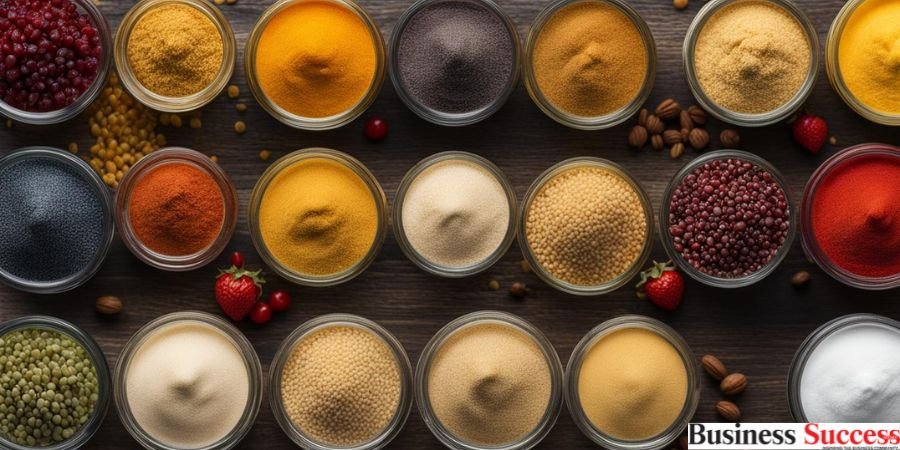In the realm of cooking and baking, food thickeners play an essential role in crafting dishes with the perfect texture, consistency, and mouthfeel. These ingredients are critical for a wide array of culinary endeavors, ranging from soups and sauces to desserts and drinks. Whether you’re whipping up a feast in a professional kitchen or experimenting at home, mastering the use of food thickeners can significantly enhance your cooking. This guide dives into the diverse universe of food thickeners, detailing their varieties, applications, and the science that makes them work.
Understanding Food Thickeners
What Are They? Food thickeners are substances added to mixtures or liquids to increase viscosity without altering other properties. They’re essential in making foods more visually appealing and palatable, with both natural and synthetic options available to chefs and home cooks alike.
Why Use Them? Incorporating thickeners into culinary creations fulfills several critical functions:
- Texture and Consistency: Thickeners can transform the texture of dishes, making them richer, smoother, or firmer as needed.
- Stabilization: They help maintain the uniformity of emulsions and mixtures, prolonging shelf life.
- Flavor and Visual Appeal: Thickeners can also enhance the taste and look of food, contributing to a more enjoyable eating experience.
Where They’re Used Thickeners are versatile, finding their place in numerous recipes:
- Sauces and Gravies: Achieving that perfect silky smoothness in sauces and gravies.
- Soups and Stews: Adding body and depth to broths.
- Desserts: Creating the ideal consistency in custards, puddings, and pie fillings.
- Beverages: Ensuring drinks like smoothies and shakes have the right viscosity.
Types and Their Uses
Natural Thickeners
- Cornstarch: A go-to for both savory and sweet dishes, offering a smooth, translucent finish.
- Arrowroot: Perfect for sauces and fruit desserts, providing a glossy sheen.
- Tapioca Starch: Known for its clear, shiny texture, ideal for desserts and boba teas.
Synthetic and Derived Thickeners
- Xanthan Gum: A versatile thickener that stabilizes and thickens, essential for gluten-free cooking.
- Guar Gum: A stabilizer for ice creams and dairy, enhancing texture without impacting flavor.
- Agar Agar: A plant-based gelatin substitute, setting at room temperature, used in vegan recipes and jellies.
Selecting the Right Thickener
By Dish: The choice of thickener can depend heavily on the specific dish and desired outcome. By Consistency: Different thickeners can produce varying levels of thickness, from light to dense. By Dietary Needs: For those with dietary restrictions, options like xanthan gum and agar agar cater to gluten-free and vegan diets. By Flavor Profile: Some thickeners are neutral in taste, while others might impart a subtle flavor.
Effective Use of Thickeners
- Preparation: Creating a slurry with a small amount of liquid can prevent clumps.
- Temperature Awareness: Different thickeners activate at varying temperatures; understanding these can make or break a dish.
- Adding Gradually: To avoid over-thickening, thickeners should be incorporated slowly and steadily.
The Science Behind It
The effectiveness of thickeners lies in their molecular structures, which interact with liquid to form gels or networks that trap moisture. This interaction is crucial for achieving the desired texture in foods. Understanding this can help in selecting and combining thickeners for optimal results.
Wrapping Up
Food thickeners are invaluable in the culinary world, offering a means to perfect the texture and consistency of dishes. By understanding the different types of thickeners, their uses, and the principles behind their effectiveness, you can elevate your cooking and create dishes that delight the senses. Whether you’re a seasoned chef or a culinary enthusiast, the world of food thickeners is ripe for exploration, inviting you to experiment and discover the potential within each ingredient.














